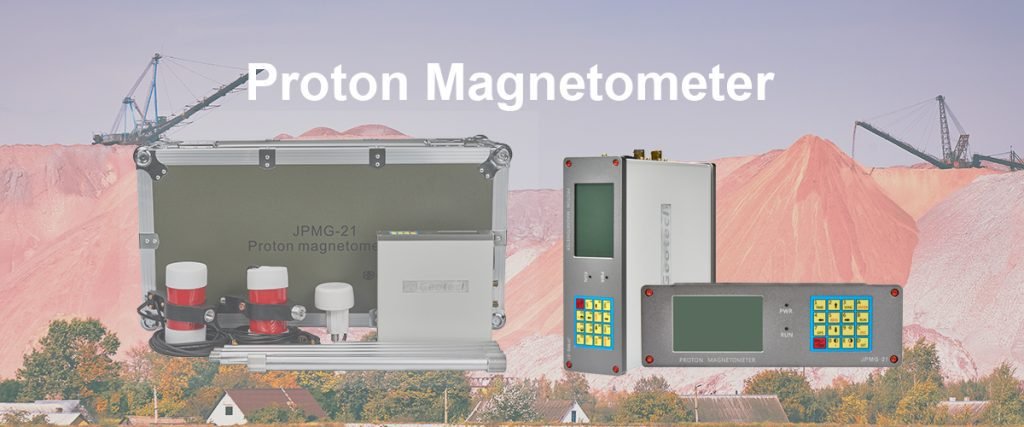Welcome to Geotech!

Magnetometers in Mineral Exploration: Key Roles & Case – Driven Impact
TIPS:In mineral exploration, magnetometers matter a lot. They detect magnetic anomalies to find ore bodies. This intro shows their key roles and uses cases to prove their impact.

Ⅰ. Introduction
In the field of mineral exploration, magnetometers, with their ability to accurately detect magnetic anomalies, have become core tools for locating ore bodies. From identifying weak magnetic signals to constructing magnetic anomaly maps, they provide crucial clues for mineral exploration work. This article will deeply elaborate on the key role of magnetometers in mineral exploration for locating ore bodies by detecting magnetic anomalies, and demonstrate their excellent exploration effects with practical cases, analyzing how magnetometers reshape the mineral exploration process.
Ⅱ. The Fundamental Connection Between Magnetometers and Mineral Exploration
1. The Relationship Between Magnetic Anomalies and Ore Bodies
Ore bodies (such as iron ore, copper ore, etc.) have different magnetic properties from the surrounding rocks, which can cause magnetic anomalies. A magnetometer in mineral exploration (also called a magnetic sensor for mining exploration or magnetometer applications in mining) can capture these magnetic anomaly signals. Its principle is based on the difference in magnetic susceptibility of different substances. Through high – sensitivity magnetic field measurement, it can identify the magnetic disturbances caused by potential underground ore bodies, providing a basis for ore body location.
2. The Operational Advantages of Magnetometers
Compared with other exploration methods, magnetometers have the advantages of speed, efficiency, and low cost. They can carry out preliminary exploration in a large – area region, quickly delineate magnetic anomaly areas, and narrow down the exploration scope. At the same time, they can operate in complex terrains (such as mountains, jungles) without being overly restricted by surface conditions, providing strong support for the preliminary work of mineral exploration.
Ⅲ. The Key Roles of Magnetometers in Mineral Exploration
1. Magnetic Anomaly Mapping and Analysis
Magnetic anomaly mapping (also called mapping of magnetic anomalies or magnetic anomaly visualization) is the core application of magnetometers. By systematically measuring the exploration area with a magnetometer, collecting magnetic field data, and constructing a magnetic anomaly map. Geologists can analyze the magnetic characteristics of underground geological bodies based on the shape, intensity, and distribution range of magnetic anomalies in the map, infer the possible location, scale, and burial depth of ore bodies, and provide precise guidance for subsequent drilling verification.
2. Ore Body Location and Identification
Ore body detection (also called detection of ore bodies or locating mineral deposits) relies on magnetometers to achieve. Magnetometers can accurately capture the local magnetic anomalies caused by ore bodies and distinguish between the background magnetic field and the ore body magnetic field. Combined with geological models and data analysis, they can identify the anomalies related to ore bodies from complex magnetic signals and determine the specific location of ore bodies, helping exploration personnel to efficiently find valuable mineral resources.
Ⅳ. Demonstrating Exploration Effects with Cases
1. Iron Ore Exploration Case
In an iron ore exploration project, a magnetometer was used to scan the area, and an obvious magnetic anomaly area was discovered. Through magnetic anomaly mapping analysis, this anomaly area showed a strip – like distribution, with high intensity and a clear boundary. Subsequent drilling verification showed that there were multiple layers of iron ore bodies underground, and the thickness matched the intensity of the magnetic anomaly well, successfully achieving accurate location of the ore body and greatly improving the exploration efficiency and success rate.
2. Polymetallic Ore Exploration Case
For the exploration of a certain polymetallic ore, the magnetometer played a key role. In a complex geological environment, the magnetometer detected multiple discrete magnetic anomaly points. After detailed mapping and analysis, it was judged that these anomalies were caused by different metal ore bodies (such as copper, nickel ore bodies). Combined with other exploration methods (such as geological sampling), the distribution range of the polymetallic ore bodies was accurately delineated, providing comprehensive data for mine development and demonstrating the advantages of magnetometers in polymetallic ore exploration.
Ⅴ. Magnetometers Promote the Development of Mineral Exploration Technology
1. Optimizing the Exploration Process
Magnetometer – based exploration (also called magnetic – sensor – led exploration or exploration using magnetometers) has reshaped the mineral exploration process. Applying magnetometers in the early stage can quickly screen out areas with exploration value, reduce subsequent ineffective exploration work, optimize resource allocation, and make the exploration process more efficient and targeted.
2. Facilitating the Integration of Emerging Exploration Technologies
The integration of magnetometers with emerging technologies (such as unmanned aerial vehicle (UAV) aerial survey, big data analysis) has expanded the boundaries of mineral exploration. UAVs equipped with magnetometers can achieve large – area and rapid magnetic measurement; big data analysis can deeply mine magnetic anomaly data and improve the accuracy of ore body identification. Magnetometers have become a key force promoting the innovation and integration of mineral exploration technologies, injecting new vitality into the development of the industry.
Ⅵ. Conclusion
Magnetometers play a key role in mineral exploration. From magnetic anomaly detection and ore body location to promoting the development of exploration technologies, they all play an irreplaceable role. Through accurately identifying magnetic anomalies, constructing magnetic anomaly maps, and verifying with practical cases, they provide efficient and reliable technical means for mineral exploration. With the continuous progress of technology, the integration of magnetometers with emerging technologies will be further deepened, continuously improving the accuracy and efficiency of mineral exploration, opening up broader prospects for mineral resource development, and leading the mineral exploration industry to a new stage of development.
Reference
- Society of Exploration Geophysicists (SEG) https://seg.org/
- Society of Environmental and Engineering Geophysicists (EEGS) https://www.eegs.org/
- Geology and Equipment Branch of China Mining Association http://www.chinamining.org.cn/
- International Union of Geological Sciences (IUGS) http://www.iugs.org/
- European Geological Survey Union (Eurogeosurveys) https://www.eurogeosurveys.org/
-1.png)

